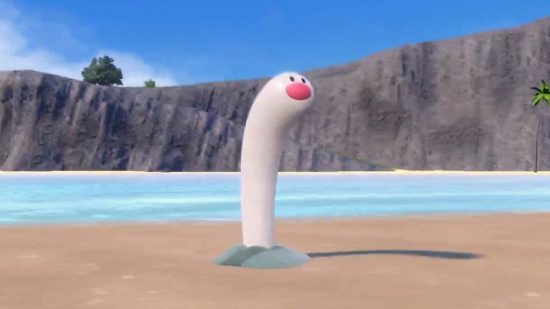In what has to be one of the weirdest reveals of a new Pokémon in recent memory, the latest addition to the Pokémon Scarlet and Violet Pokédex has appeared during a mock webinar on the ecosystems of the Paldea Region.
With a distinct pink nose and a body half concealed underground, this new white, worm-like creature certainly resembles Generation 1’s Diglett. A new Paldean form perhaps?
However, after some theorising from the ‘experts’ in the webinar, which was spotted by Serebii, it appears that despite the similarities this is not another regional form of Diglett (who get a lusciously-locked Alolan form in Sun and Moon). It’s not even a new evolution of the standard Ground-type either, which is confirmed to be in Scarlet and Violet. No, this here is a completely separate Pokémon, which is apparently called… drumroll, please… Wiglett. At least, that is what the English subtitles of the multi-language webinar dub the Pokémon as.
We’re not sure on typings just yet, and Wiglett is yet to appear on the game’s official website alongside other Scarlet and Violet new Pokémon like Lechonk, Cetitan, and Klawf. However, the webinar’s footage and the analysis of the experts did confirm it lives on the beaches of Paldea by the ocean, so some form of Water typing is likely.
You can watch the full webinar here (note that the site’s text is in Japanese, but English subtitles will play on the video), or see just the Wiglett section below.
With the Pokémon Scarlet and Violet release date fast approaching, expect to see some more new Pokémon being revealed in the coming weeks, as it’s unlikely we’ve seen the last of the new additions and Paldean forms.
